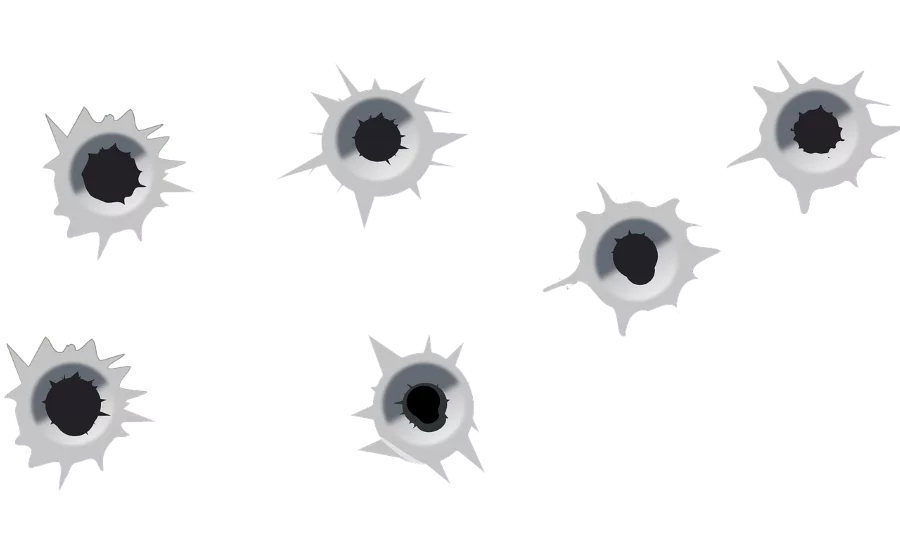Indoor gunfire detection as a security tool

Statistically, the probability of an active shooter event occurring at any given location is quite small. Even so, the devastation active shooters cause is so horrific that being prepared for such events demands attention and resources. A recent survey1 of top security decision makers representing a wide range of workplaces, including schools, offices, retail spaces, places of worship, manufacturing facilities, and utilities, reported that an active shooter scenario was the physical security threat that concerned them most.
In fact, Section 5 of the Occupational Safety and Health Act requires employers to furnish workplaces that are “free from recognized hazards that are causing or are likely to cause death or serious physical harm.” Sadly, active shooters are a “recognized hazard” for many types of work environments. Failure to implement sufficient risk mitigation programs can result in significant fines from OSHA, as well as legal liability for injuries and deaths resulting from an attack.
In response, technologies such as video surveillance, access control, security screening, emergency communication systems and visitor management can perform in an active shooter scenario to help mitigate risk and reduce harm.
A gunfire detection system can notify authorities within seconds of the first trigger pull and equip first responders with actionable intelligence to deploy immediately on site. Studies show that for every minute that victims wait for treatment, survival is 10% less likely. By eliminating valuable minutes before 911 is contacted and providing clear and concise data of the gunman’s location, number of shots fired and type of weapon, gunfire detection systems can potentially lessen the duration of a mass shooting.
The historically high price for such systems is multi-faceted. For effective coverage, a high number of detectors must be deployed throughout a property, and the price adds up quickly. Labor-intensive monitoring and alert notification services that support these systems are expensive. Unlike many security technologies whose cost can be justified for the many day-to-day use cases in which they deliver value, most gunshot detection systems will never, hopefully, need to alarm and notify. These compounding concerns make budgeting for their high price even harder to justify.
The adoption of IoT and cloud computing in other industries has brought a new wave of low-cost hardware powered by powerful backends. This architecture, when applied to indoor gunshot detection, can be paired with AI engines to enable a new generation of systems; systems that will redefine the capabilities and pricing of hardware sensors, software, installation, and monitoring.
For gunfire detection systems, sensors that leverage the cloud to process and analyze their signals can eliminate the need for additional overhead hardware on-site. The cloud facilitates mobile and web-based management software and installation tools with minimal upfront costs. Continuously improving AI, powered by cloud computing allows for constant adaptation and improvement of gunfire analysis, reducing or eliminating the need for human involvement for monitoring and throughout the alert notification sequence.
Technologies rooted in government and military applications have limited the accessibility of gunfire detection systems. As the headlines continue to be written and the question continues to be raised actions must be taken to open up that access. IoT and cloud computing continue to grow in their maturity and ubiquity, and they offer a lifeline to this previously stifled sector. The ability to process a large number of high-speed, high-precision inputs no longer has to drive up the cost of every device in the system.
Maximizing coverage and minimizing response time is critical to an effective system deployment. Combining full coverage with accurate real-time information allows for real-time response, so planning an approach no longer becomes a guessing game for first responders.
Newer systems that tie directly to 911 call-centers, or public safety answering points, ensure that information flows freely to 911. This allows those first on the scene to quickly get their bearings and put a plan into action. On campuses of more than one building this can have a profound impact on the duration of an event. Requiring the search of every building or every floor of a building can take an incredible amount of time even when executed by a highly skilled team.
Extending these systems with integrations to video, mass notification, access control, and more can give a complete active shooter response plan with minimal dependence on any one individual’s actions. Active shooter situations present a level of chaos for which it is difficult to train and prepare, and we have seen in the past how a plan can fall apart at first contact. Having as much of the response as possible executed through these automated integrations can free up personnel to handle other duties.
Looking for a reprint of this article?
From high-res PDFs to custom plaques, order your copy today!







